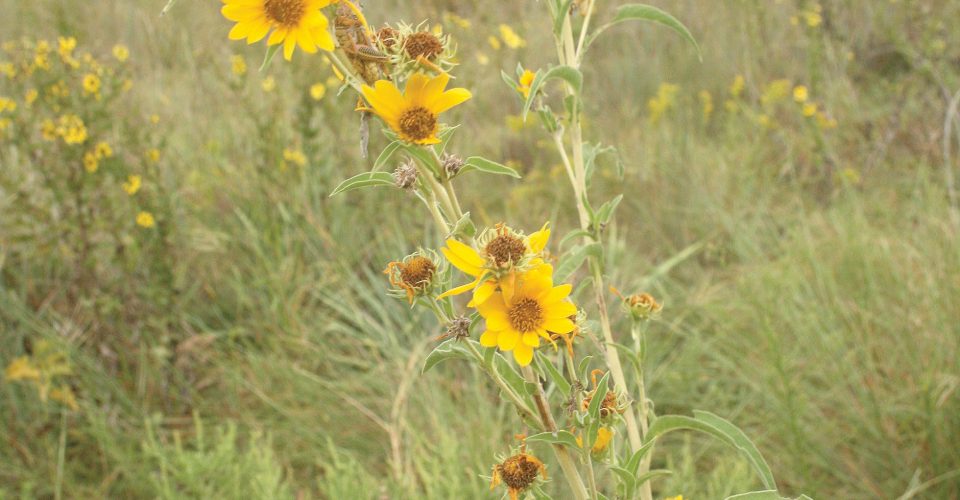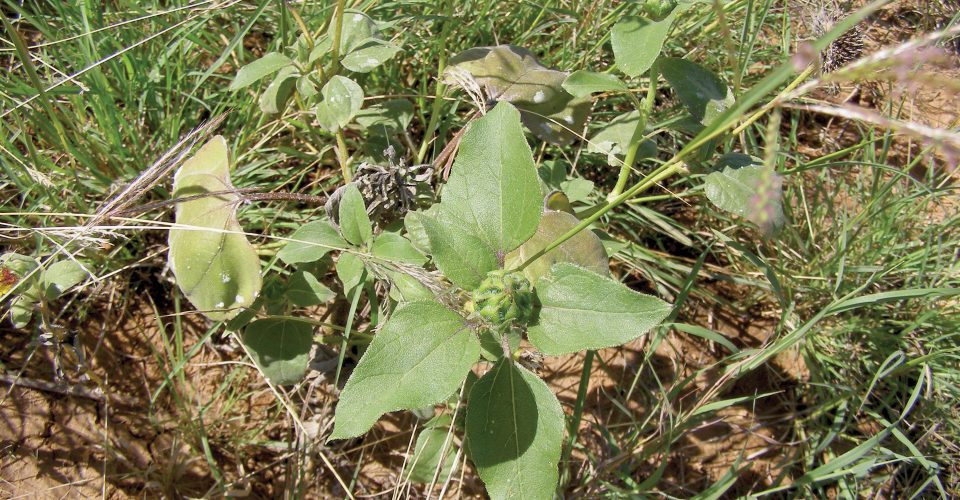Sunflower (Helianthus annuus)
The distinctive and familiar sunflower is one of the most widely recognized “weeds” in the Southwest. It is a native, warm season annual plant that is found throughout the country and grows in many soil types. Its appearance is often a result of soil disturbance.
- Showy plant that can reach heights of more than 6 feet and form dense stands
- Can be identified by the rough feel of the leaves and stems
- Leaves are covered in rough hairs that can be abrasive to the touch
- Bright yellow flowers that can grow up to 4 inches in diameter and are on the ends of the plant stem
- Very poor forage for livestock, but the small black seeds make excellent feed for mourning dove, turkey, bobwhite quail and a host of song birds
- Seed can be purchased commercially for wildlife plantings
The sunflower can be a very troublesome plant for farmers because it competes for sunlight and uses a tremendous amount of moisture.
Editor’s note: Kent Ferguson, retired rangeland management specialist from USDA Natural Resources Conservation Service (NRCS), is providing us with plant identification photo stories to help ranchers identify those forbs, forages and species growing in the pastures. Additional photos provided by USDA NRCS.
Sunflower is excerpted from the April 2015 issue of The Cattleman magazine.



